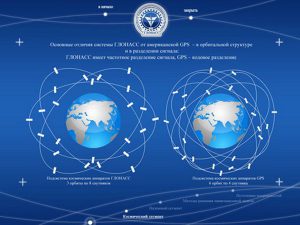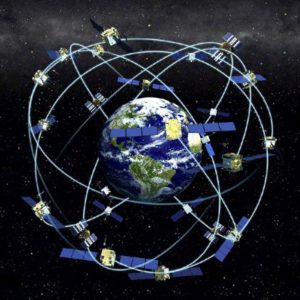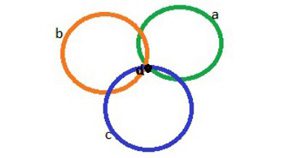 The position in space can be determined visually when you see an object in the field of view or at a great distance, if it has a device that receives and transmits a radio signal.
The position in space can be determined visually when you see an object in the field of view or at a great distance, if it has a device that receives and transmits a radio signal.
Most of the world's population has heard about GPS data and its capabilities. Such devices are now being installed in cars, trains, water and air transport. But modern mobile devices have much more opportunities to transmit and receive location data. Let's dwell on them in more detail.
GPS and Glonass
If you pay attention to a modern smartphone, then in its characteristics you can see many abbreviations that tell about the features and capabilities of the device. With regard to working with the positioning system, the names of the networks used are indicated.
GPS – Global Positioning System. An international positioning system developed by the United States Department of Defense. The process involves 32 satellites (initially it was assumed 24), emitting a radio signal, which move in the middle atmosphere of the Earth. To determine the position of a certain object in space, the results taken simultaneously from three machines are evaluated.

Glonass is a Russian system that operates on the same principle as GPS. 24 satellites travel in orbit. The peculiarity of Glonnas is that the movement of satellites does not depend on the rotation of the globe and this makes the system more stable. When locating the device, the signal from the three devices is also used.
These are the main titans of geolocation determination systems. Most recently, satellites began to be launched by the countries of near Asia. Their signal is only available to local devices.
In addition to international satellite signal standards, devices can use additional data. In this they are helped by ground elements:
- Communication towers. The jumble of antennas transmitting the mobile operator's signal is precisely located. By the speed of signal transmission to a specific mobile phone, you can find out the distance.
- Wi-Fi hotspots. Private or public networks are individually numbered and can help locate a subscriber. The smartphone can detect the network even when the open connection is disconnected.
Mobile Capability Specifications may include A-GPS. This is a system that helps to quickly accelerate the identification of satellites and more accurately determine the location of the subscriber. By itself, it is a cold start for the system. The presence of A-GPS makes it possible to determine the location, despite being in a building with thick walls and other places.
to the content
Geolocation work in smartphones
Every smart phone has a number of features that can bring capabilities not available to other devices. Continuous improvement of the operating system and service equipment expands the functionality.
The procedure for determining the location is as follows:
Satellite # 1 sends a signal (a) directed to the Earth, and determines the speed and time of receiving a response by the subscriber (d):

Satellite # 2 transmits a radio wave (b) to the point:

Satellite # 3 emits its signal (c) in the same direction:

By analyzing the travel time of the signal to the destination and taking into account the location of the satellites, you can determine where the receiving point is. If you also connect stationary methods, then the accuracy will be several meters.
Knowing the location of the auxiliary elements, you can calculate the position of the object above ground level.
To use a satellite signal, it is not necessary to be in the network of a mobile operator, as this is a completely different system.
On smartphones, the geolocation icon looks like an inverted blob  , and it can be found in the quick access bar or in the settings. When the service is enabled, a similar symbol will appear at the top of the screen.
, and it can be found in the quick access bar or in the settings. When the service is enabled, a similar symbol will appear at the top of the screen.
to the content
How can I find a device using geolocation?
Each mobile phone, tablet, smartphone has its own unique individual number (IMEI) and address. This data allows you to distinguish it from a variety of surrounding devices. The operating system manufacturer's website has a special tab that allows you to track the location signal in real time. The smartphone settings must have permission to transfer geo-location data and search.
When entering the site (google.com/android/find), the user is presented with a list of devices associated with the account. You must choose which of them you want to find.

The search is offered in two ways:
- Activation of the device sound signal. It helps if you do not know where the phone is nearby, for example, if a child was playing with it and could have dropped it behind some piece of furniture.
- Locating. Needed to determine the position of the device on the map. This will help when contacting the police in the event of a theft or to find out where the smartphone was left.

Next to the phone symbol there is information about the last synchronization and receiving of location data.
to the content
How to enable / disable geolocation?
To enable the transfer of geodata on devices Android, you need to go to the phone settings – location and protection – location.

In devices Apple, you need to open the settings – privacy – geolocation services. Disabling transmission of location is done by putting the slider in the 'off' mode. If GPS is turned off, no application can use the data.

to the content
Setting up geolocation
When you enter the section for enabling location, you can choose which applications will have access to data. For the correct operation of some programs, information exchange is required. Navigators, maps, bank clients, NFC services and others calculate the position of the device to provide recommendations for nearby places and services, and build a route.
With permission to collect information about the location, the history of visits and your current position can be broadcast in the profile, messengers.
Location-based ads can and can be compiled in apps and in the browser, and enabling the service makes it much easier to find on the map.
